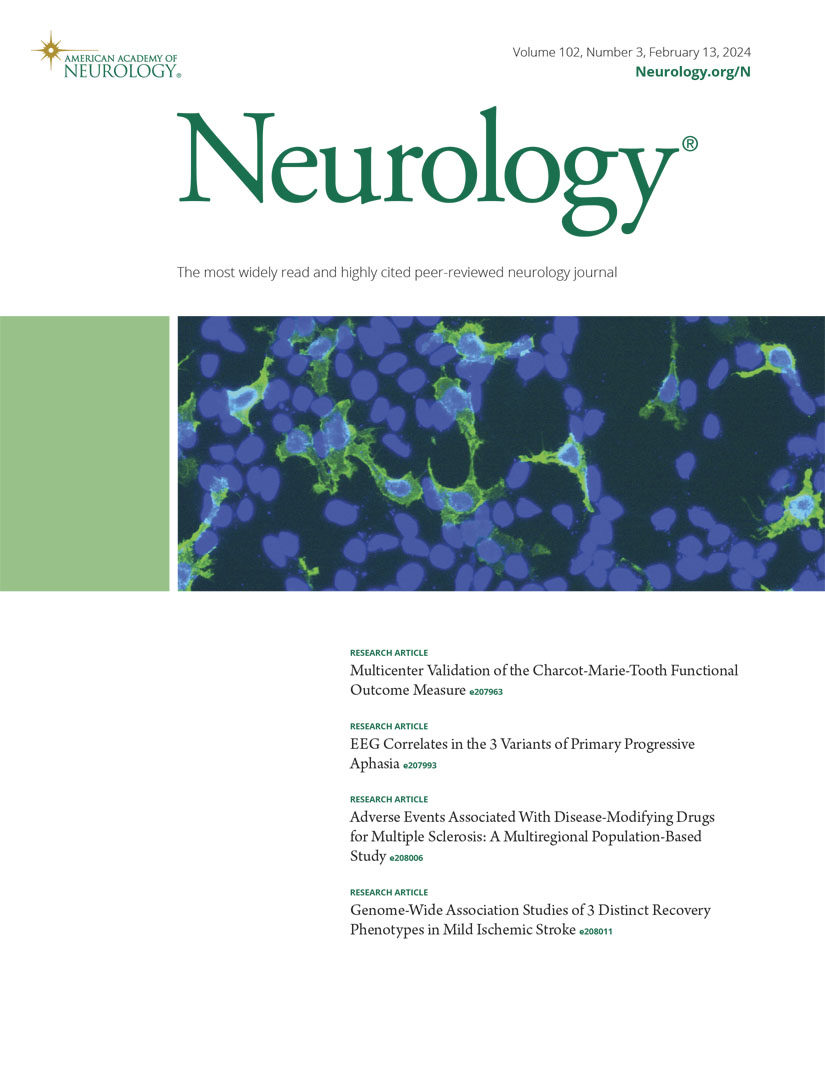美国脑卒中临床试验的地理差异:十年数据(2010-2020)
IF 7.7
1区 医学
Q1 CLINICAL NEUROLOGY
引用次数: 0
摘要
背景与目的卒中临床试验的地理差异可能限制高负担地区创新治疗的可及性。本研究考察了已完成的脑卒中试验(2010-2020年)与脑卒中死亡率和住院率的分布。方法已完成试验的数据来自ClinicalTrials.gov,卒中负担指标来自Control and Prevention。我们计算相对研究频率(RSF),方法是将每10万名医疗保险受益人的中风死亡人数、年龄调整的中风死亡率和中风住院人数除以可用试验的数量。RSF值按四分位数分层。结果在美国40个州共完成了649项卒中相关临床试验,其中10个州没有注册试验。RSF差异很大,最低的四分位数包括密西西比州(RSF = 14.40)和路易斯安那州(RSF = 13.90),卒中住院率高,研究活动最少,而加利福尼亚州(RSF = 0.09)和纽约州(RSF = 0.19)有更多的临床试验可用性来解决卒中负担。在高负担地区,特别是在东南部和中西部地区,卒中试验的可获得性低得不成比例。卒中死亡率和住院率高但临床试验可获得性低的国家可能面临获得试验的障碍,这可能加剧卒中护理方面的差异。本文章由计算机程序翻译,如有差异,请以英文原文为准。
Geographic Disparities in Stroke Clinical Trials Across the United States: A Decade of Data (2010-2020).
BACKGROUND AND OBJECTIVES
Geographic disparities in stroke clinical trials may limit access to innovative treatments in high-burden regions. This study examines the distribution of completed stroke trials (2010-2020) relative to stroke mortality and hospitalization rates.
METHODS
Data on completed trials were obtained from ClinicalTrials.gov and stroke burden metrics from the Control and Prevention. We calculated relative study frequency (RSF) by dividing the number of stroke deaths, age-adjusted stroke death rates, and stroke hospitalizations per 100,000 Medicare beneficiaries by the number of available trials. RSF values were stratified by quartiles.
RESULTS
A total of 649 stroke-related clinical trials were completed across 40 states, with 10 states having no registered trials. RSF varied widely, with the lowest quartile, including Mississippi (RSF = 14.40) and Louisiana (RSF = 13.90), having high stroke hospitalizations with minimal research activity, while California (RSF = 0.09) and New York (RSF = 0.19) had greater clinical trial availability to address stroke burden.
DISCUSSION
Stroke trial availability is disproportionately low in high-burden regions, particularly in the Southeast and Midwest. States with high stroke mortality and hospitalization rates but low clinical trial availability may face barriers to trial access, potentially exacerbating disparities in stroke care.
求助全文
通过发布文献求助,成功后即可免费获取论文全文。
去求助
来源期刊

Neurology
医学-临床神经学
CiteScore
12.20
自引率
4.00%
发文量
1973
审稿时长
2-3 weeks
期刊介绍:
Neurology, the official journal of the American Academy of Neurology, aspires to be the premier peer-reviewed journal for clinical neurology research. Its mission is to publish exceptional peer-reviewed original research articles, editorials, and reviews to improve patient care, education, clinical research, and professionalism in neurology.
As the leading clinical neurology journal worldwide, Neurology targets physicians specializing in nervous system diseases and conditions. It aims to advance the field by presenting new basic and clinical research that influences neurological practice. The journal is a leading source of cutting-edge, peer-reviewed information for the neurology community worldwide. Editorial content includes Research, Clinical/Scientific Notes, Views, Historical Neurology, NeuroImages, Humanities, Letters, and position papers from the American Academy of Neurology. The online version is considered the definitive version, encompassing all available content.
Neurology is indexed in prestigious databases such as MEDLINE/PubMed, Embase, Scopus, Biological Abstracts®, PsycINFO®, Current Contents®, Web of Science®, CrossRef, and Google Scholar.
 求助内容:
求助内容: 应助结果提醒方式:
应助结果提醒方式:


